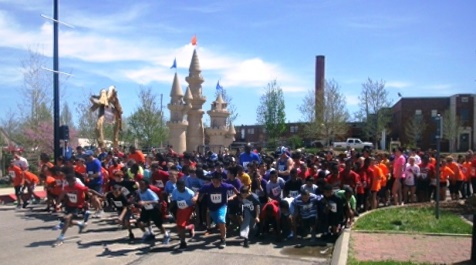by Lori Wuellner
Spring has sprung. It’s time to clean up the grill and get it ready for another season of tasty meals.
In addition to “spring cleaning” the grill, do a double check on your food thermometer. Make sure first that you have one and next that it is accurate. Test your thermometer by placing it in a cup of ice and water. If it reads 32 degree F. you are good to go, but if not either adjust it or get yourself a new one.
Using a food thermometer takes the guess work out of determining when grilled meats are cooked properly and safe to eat. Here is what is important to know when grilling:
• Hamburgers and other ground beef, pork, veal and lamb should reach an internal temperature of 160°F
• Hamburgers and other ground beef, pork, veal and lamb should reach an internal temperature of 160°F
• Whole cuts of beef, pork, lamb and veal should be cooked to an internal temperature of 145°F
• Cook all poultry to an internal temperature of 165°F
• Pre-cooked and processed meats like hot dogs to 165°F
• Fish should be cooked to an internal temperature of 145°F
Color is not a reliable measure of doneness. When checking the internal temperature of grilled meat always check in the thickest part of the product.
Check for proper internal temperatures in at least two locations on the food to ensure even cooking occurred. When removing cooked meat from the grill, make sure to place it on a clean plate, not the same one used for the raw food prior to cooking. The juices from the raw meat can spread bacteria to safely cooked food.
Always use a food thermometer when preparing or grilling food. Practicing safe food handling helps ensure that you are doing what you can to keep yourself and others healthy while minimizing the risks of a foodborne illness. More information on food safety can be found at www.ksre.ksu.edu/foodsafety/
For more information on nutrition contact the Wyandotte County Extension office at 299-9300 or email at [email protected].
The following recipe from Fruits and Veggie More Matters would make an excellent, nutrient rich side dish. Pair it with grilled chicken, pork or fish for a tasty meal.
(Source: Is It Done Yet? USDA Food Safety and Inspection Services; Grill Master, Fight BAC; Gayle Price, M.S., RDN, LD, Extension Specialist, KSRE)
Southwestern Coleslaw
Ingredients
• 1/2 tsp. garlic powder
• 2 1/2 Tbsp. cider vinegar
• 1 Tbsp. water
• 1/2 tsp. ground cumin
• 1/2 tsp. dry leaf oregano
• 1/2 cup chopped cilantro
• 4 tsp. vegetable oil
• 2 tsp. sugar
• 1/2 tsp. salt
• 1/2 to 1 medium jalapeno seeded and chopped
• 4 cups finely shredded green cabbage
• 1 cup chopped green onions
• 1 cup thin strips of red bell pepper OR canned roasted red peppers
• 1 cup cooked yellow corn
Directions
Combine in a small bowl all salad dressing ingredients and mix well. In a large bowl, mix shredded cabbage, onion, red pepper and corn. Add salad dressing and toss well. Cover and chill for about 1 hour prior to serving.
Each serving provides: An excellent source of vitamin C, and a good source of vitamin A, folate and fiber.
Nutritional Information…Calories 76, carbohydrates 12g, total fat 3.1g, cholesterol 0mg, dietary fiber 3g, sodium 207mg, protein 2g.
(Source: Recipe courtesy of Produce for Better Health Foundation (PBH). This recipe meets PBH and Centers for Disease Control & Prevention (CDC) standards that maintain fruits and vegetables as healthy foods.)

